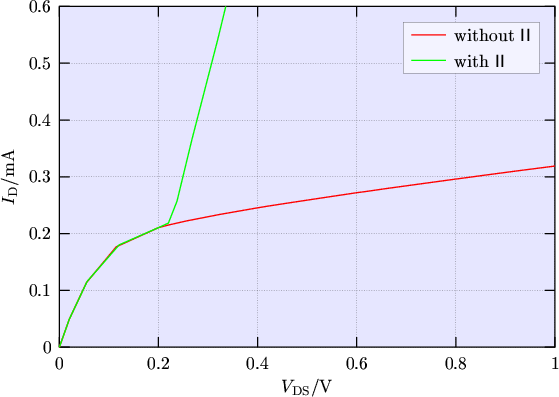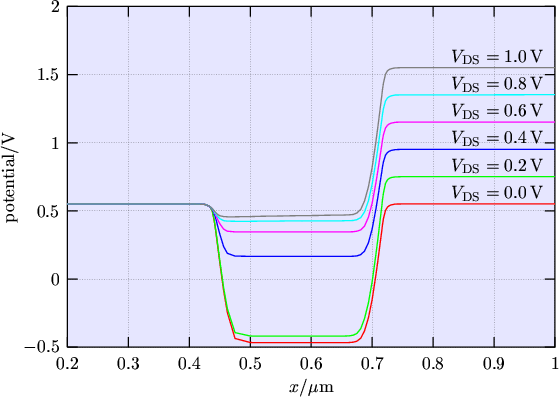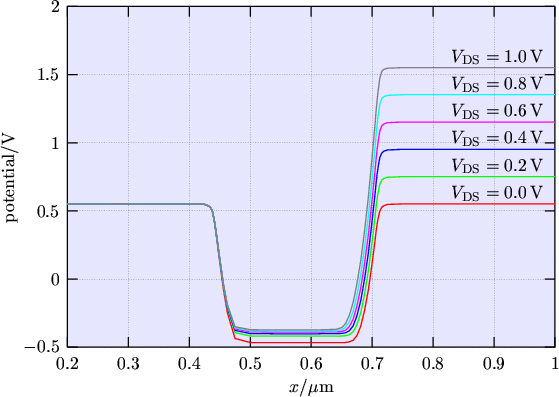|
|
|
|
Previous: 4.1 Devices Used Up: 4. Standard Energy Transport Simulations Next: 4.3 Anomalous Output Characteristic |
 |
The increase of the drain current can be partially attributed to the kink-effect [58]: the holes generated by impact-ionization are drawn into the floating body where they raise the potential. Fig. 4.3 shows the lateral potential distribution in the middle of the silicon film.
 |
The increased body potential leads via the body effect to an increased drain current. The second contribution to the current increase is due to the bipolar effect. The increased body potential acts as a forward bias to the source-body diode. Electrons are injected from source to the body, diffuse through the body, and are collected by the drain.
Simulating the device without impact-ionization yields a comparatively small shift in the body potential as shown in Fig. 4.4. In this simulation condition the kink in the output characteristic does not appear.
 |
M. Gritsch: Numerical Modeling of Silicon-on-Insulator MOSFETs PDF